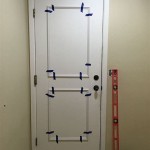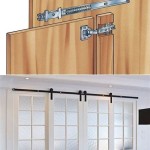Interior Architecture vs. Design Salary Scale in the Netherlands 2024
The Netherlands, with its strong design culture and thriving economy, presents a robust job market for professionals in the fields of interior architecture and interior design. Understanding the nuances of the salary scales for these related, yet distinct, professions is vital for both aspiring and experienced professionals. This article will delve into the factors influencing compensation, explore the general salary ranges in 2024, and highlight key distinctions between the two disciplines that contribute to potential differences in earnings.
Navigating the complexities of the Dutch job market requires consideration of numerous variables. These include years of experience, education level, specific skill sets, the size and type of company, the location within the Netherlands, and the overall economic climate. Furthermore, the demand for specialized skills, such as sustainable design practices or proficiency in particular software, can significantly impact earning potential.
It is crucial to understand the difference between interior architecture and interior design to accurately assess the potential salary scales. While both fields deal with shaping interior spaces, their focus and responsibilities differ considerably. Interior architecture involves a deeper understanding of structural elements, building codes, and the integration of interior spaces within the broader architectural context. Interior design, on the other hand, often concentrates more on aesthetics, functionality, and the selection of materials and finishes.
Key Factors Influencing Salary
Several key factors exert significant influence on the salary scales for interior architects and designers in the Netherlands. These factors are interconnected and often evaluated collectively by employers when determining compensation packages.
Experience and Education: As in most professions, experience plays a crucial role in determining salary. Entry-level positions naturally command lower salaries compared to roles requiring several years of practical experience. A master's degree in interior architecture or a related field typically results in a higher starting salary than a bachelor's degree alone. Continued professional development through courses and certifications also contributes to increased earning potential. The ability to demonstrate a portfolio of successful and diverse projects significantly strengthens a candidate's negotiating position.
Technical Skills and Software Proficiency: Proficiency in industry-standard software is essential. This includes Computer-Aided Design (CAD) programs such as AutoCAD and Revit, Building Information Modeling (BIM) software, rendering programs like SketchUp and 3ds Max, and graphic design software such as Adobe Creative Suite. Being adept at these tools increases efficiency and allows professionals to contribute more effectively to project development and presentation. Knowledge of sustainable design principles and experience with relevant software for energy modeling and environmental analysis are also increasingly valuable.
Company Size and Location: Larger architectural firms and design agencies typically offer higher salaries than smaller companies or freelance positions. This is often due to larger project budgets and a more established client base. Location within the Netherlands also matters. The Randstad region, which includes Amsterdam, Rotterdam, The Hague, and Utrecht, generally offers higher salaries due to the higher cost of living and the concentration of design-related businesses. However, opportunities and competitive salaries can also be found in other regions, particularly those with growing economies or specialized industries.
Typical Salary Ranges in 2024
While precise figures can fluctuate based on the factors mentioned above, it's possible to provide a general overview of the salary ranges expected for interior architects and designers in the Netherlands in 2024. These figures are based on industry reports, salary surveys, and recruitment agency data.
Entry-Level Interior Designer (0-2 years experience): Entry-level interior designers can expect to earn between €28,000 and €35,000 per year. This range may vary depending on the intern's performance during their internship or the starting project. Positions at this level often involve assisting senior designers with project tasks, preparing presentations, and sourcing materials.
Mid-Level Interior Designer (3-5 years experience): With a few years of experience, interior designers can progress to more challenging projects and take on greater responsibility. The salary range for mid-level interior designers typically falls between €35,000 and €45,000 per year. At this stage, professionals are expected to manage smaller projects independently and contribute significantly to larger team projects.
Senior Interior Designer (5+ years experience): Senior interior designers possess extensive experience and a proven track record of successful project completion. Their responsibilities include leading design teams, managing client relationships, and overseeing all aspects of the design process. Salaries for senior interior designers can range from €45,000 to €65,000 or higher, depending on their expertise and the size of the company.
Entry-Level Interior Architect (0-2 years experience): Entry-level interior architects, often fresh graduates with a master's degree, can anticipate salaries ranging from €32,000 to €40,000 per year. These positions typically involve assisting senior architects with technical drawings, building code compliance, and project coordination.
Mid-Level Interior Architect (3-5 years experience): With increasing experience, interior architects take on more complex projects and responsibilities related to structural integrity and building regulations. The salary range for mid-level interior architects generally falls between €40,000 and €55,000 per year.
Senior Interior Architect (5+ years experience): Senior interior architects are highly experienced professionals responsible for leading architectural design teams, ensuring compliance with building codes, and managing large-scale projects. Salaries for senior interior architects can reach €55,000 to €80,000 or higher, depending on their expertise, project complexity, and the size of the firm. The experience leading the planning or designing may impact the value of the senior interior architect.
It is important to note that these are approximate ranges, and individual salaries can vary significantly based on the specific role, company, and individual's qualifications. Furthermore, freelance interior designers and architects typically have a higher potential income, but also face greater financial instability due to the fluctuating nature of project-based work. The ability to acquire new projects and network is important for freelance workers.
Distinctions Affecting Compensation
The differences in scope and responsibilities between interior architecture and interior design contribute to variations in salary expectations. Interior architects, with their focus on structural elements and building codes, often command higher salaries than interior designers, particularly at the senior levels. This is due to the increased complexity and technical nature of their work.
Interior architecture typically requires a more extensive educational background, often including a master's degree in architecture or a related field. This higher level of education, coupled with the specialized knowledge required for building code compliance and structural design, justifies a higher earning potential. The educational differences between the two roles is noticeable with the architectural degree, although more expensive, often shows a higher return.
The specific skill set required for each profession also contributes to salary variations. Interior architects need a strong understanding of structural engineering principles, building regulations, and construction methods. They must be proficient in CAD and BIM software and possess the ability to create detailed technical drawings and specifications. Interior designers, on the other hand, may prioritize skills in space planning, color theory, material selection, and visual communication. The type of knowledge of codes may be more valuable than aesthetic design.
The type of projects undertaken by each profession also influences salary expectations. Interior architects often work on larger-scale projects involving structural modifications, building renovations, and the integration of interior spaces within the overall architectural design. Interior designers more frequently focus on smaller-scale projects, such as residential interiors, office spaces, and retail environments. Larger projects require more time and often more complex management skills.
The legal responsibilities associated with each profession can also affect compensation. Interior architects are often responsible for ensuring compliance with building codes and regulations, and may be held liable for design errors or omissions. This increased level of responsibility justifies a higher salary compared to interior designers, who typically have less direct liability for structural or building code-related issues.
The impact of specialization within each field is also relevant. Interior architects specializing in areas such as sustainable design, healthcare design, or historical preservation may command higher salaries due to the specialized knowledge and skills required. Similarly, interior designers specializing in areas such as hospitality design, retail design, or kitchen and bath design may also see increased earning potential.
Negotiating a competitive salary requires careful preparation and a thorough understanding of the job market. Professionals should research industry salary benchmarks, highlight their skills and experience, and emphasize their contributions to previous projects. Demonstrating a strong portfolio of successful projects and showcasing a willingness to learn and adapt to new technologies can significantly enhance a candidate's negotiating position. The negotiation skills are often overlooked, and can result in a failure to capture potential profit or benefits.
Networking within the design community is also crucial for career advancement and salary negotiation. Attending industry events, joining professional organizations, and building relationships with other professionals can provide valuable insights into salary trends and job opportunities. A strong professional network provides many opportunities for growth, mentorship, and the ability to learn about the current market standards.

Interior Designer Average Salary In Netherlands 2024 The Complete Guide

Salary Scales Vs Abroad Architects Interior Graphic Project Manager Rtf Rethinking The Future

Salary Scales Vs Abroad Architects Interior Graphic Project Manager Rtf Rethinking The Future

Who Earns More Interior Designer Or Architect

Salary Scales Vs Abroad Architects Interior Graphic Project Manager Rtf Rethinking The Future

Architectural Design Process Its 7 Phases Explained 2024

Number Of Employees At Leading Interior Design Firms 2024 Statista

Netherlands Hourly Rate Of Design Agencies By Activity Statista

Net Positive Buildings And Energy Design

Top 10 Best Countries For Interior Design Jobs
Related Posts








